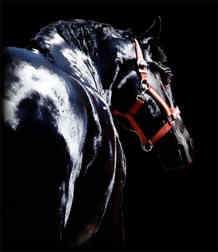
There is always room for more
research for new stable designs that are suitable for both horse and owner. Edwards (1996) proposed a futuristic space age design that is
feasible, practical and cost effective takes into consideration the needs of the
horse, handler and owner. There is
also the need for epidemiological studies to monitor infections where horses are
kept at pasture.
Minero et
al (1998) aimed to study whether heart rate values recorded while subject
stereotypies are significantly different from heart rates recorded during other
behaviours. Long term crib-biters
were used. The preliminary results
show that the heart rate while the horses were performing the stereotypy was
statistically lower than during other behaviour patterns.
The heart rate increased for a few seconds before cribbing bouts and
decreased once the cribbing had started. These
preliminary findings seem to support the homeostatic function hypothesis of some
stereotypies in some species.
As well as researching alternatives
to stables there needs to be continued research on equine welfare. The Brambell
committee was established to review the evidence that confinement of farm
animals caused undue suffering, but there needs to be something similar done on
horses. Research needs to be carried out on abnormal behaviours and welfare of
competition horses.
There is a lack of detailed
fundamental research exploring the motivational factors underlying stereotypies.
There is evidence to support the theory that stereotypies originate from
specific motivational states but little research with the involvement of
aversion, locomotory or other motivational systems.
There is also research needed to measure changes in hormonal and
physiological variables during or after stereotypic bouts.
There is a need to unify the characteristics of stereotypies, and
research to link stereotypies and welfare more.
Mason (1993) stresses the importance
of presenting a complete description of the morphology, timing and stage of
stereotypy, as well as the subject’s circumstances, age and past history.
Future studies should approach stereotypies in a multidimensional way,
describing and measuring each of the different properties. A related technique
uses the way in which the animals’ environment differs.
Space, amount of food and so on are recorded, and the relationships
between these and the abnormal behaviours are analysed.
Ödberg (1993) suggested the
following for future research: